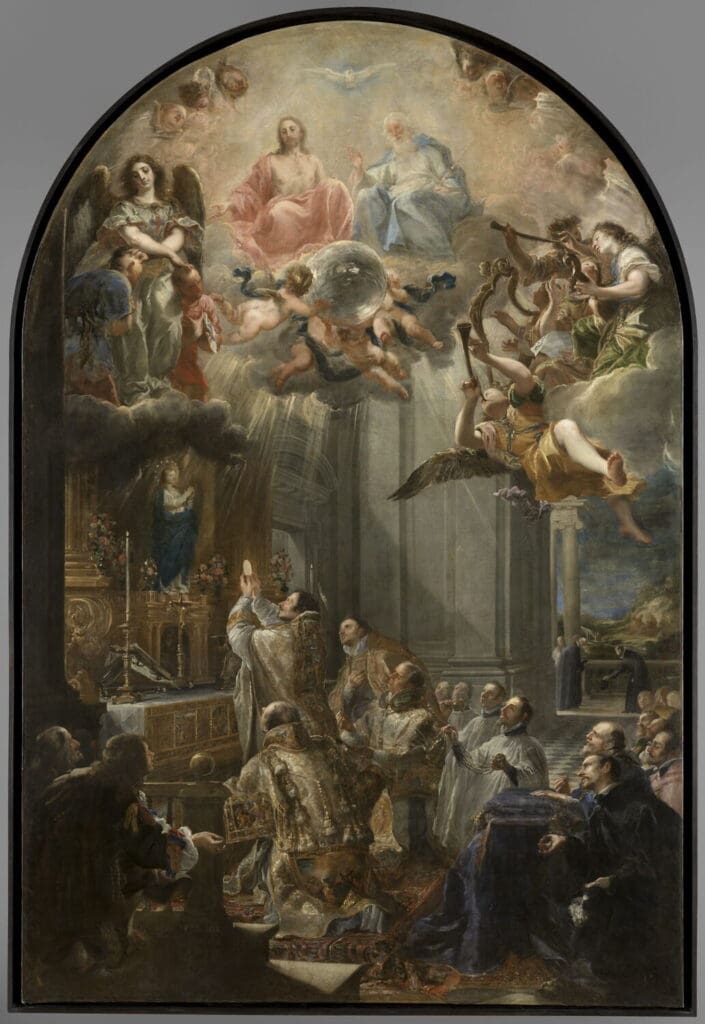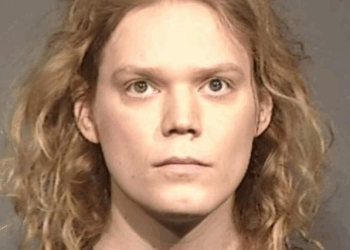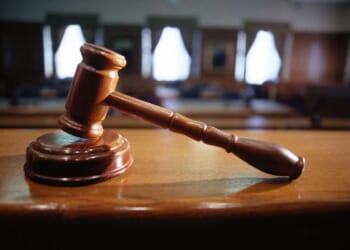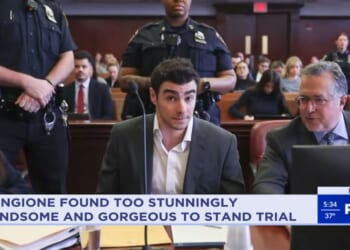My family and I spend a few months out of the year in Nova Scotia, in a part of the province that was once overwhelmingly Catholic. The congregations are aging, partly because a lot of young people leave the island for work far away, and partly, I think, because all the motions and accouterments at Mass say, “There is nothing for the mind to search out here.”
At Mass at one church, everybody stands after the Sanctus, but for just the first sentence of the ever-used second Eucharistic prayer. We are supposed to kneel once the priest calls down the Holy Spirit upon the gifts. What this means, in practice, is that the clomp-clomp of kneelers and the shifting of bodies breaks up the prayer and interrupts the priest.
Ideas about liturgical gestures, such as this one from the Canadian bishops, may sound good in the abstract, but gestures are not abstract. They derive most of their power from the realities of human bodies. Only someone insensible to human bodies in motion can have failed to predict what would happen, and only someone obtuse in the art of human gesture could fail to see that the physical interruption would confuse the prayer, separating one sentence from the next, when no such separation in meaning or action is called for.
Such obtuseness characterizes their approach to liturgical gesture generally. At the end of the consecration, everyone is supposed to stand, and again you have the rumbling and tumbling, just when the priest is saying, “The mystery of faith.” Again the disruption, the discontinuity, and again the likelihood that in the awkwardness you will not be paying close attention to your reply to the priest. If the Eucharist is a great mystery, we want then of all times to direct our attention wholly toward it. Nothing else should obtrude.
Communion is received standing up, as almost everywhere else in the world since the Great Liquidation. I suspect the posture is imposed not for what it is, but for what it is not: kneeling. Again, you cannot impose a meaning on a bodily gesture which it does not in itself possess, or which it does not lend itself to.
You wait in line, vaguely aware of the person behind you, and you cannot pause after you receive, as you cannot pause after you get your burgers at the fast-food counter, or after you load your luggage on the conveyor belt at the airport, or after any of the many things we stand in line for, usually with faint impatience or irritation. You get out of the way, and you return to your seat. Banal already, but the diocese of Antigonish, Nova Scotia, you remain standing until everyone else has received, thus prolonging the impatience.

At this particular parish, it causes confusion, not conducive to prayer. A few people do kneel. Some people sit. Most people stand, as the Canadian bishops insist is best. It is supposed to be a sign of solidarity.
That’s nonsense. You might pray, but mostly you are waiting for the last person to sit down, so that you can sit too. You are not self-collected; you can’t be. People waiting for a cue can do little else but watch. Try to lose yourself in prayer while you wait for everyone to receive Communion – a dozen now in each line, now four or five, now two, then one – at last!
It is difficult also to pray while you are shuffling in line, because you must think about when to move your feet and where to put them, so as not to step on anybody’s shoes. I do not say it is impossible. With God, all things are possible. It is unlikely.
We are bodily beings, and what we do with our bodies instructs our minds. When I was a boy, we knelt at the Communion rail in our church, a work in Italian marble, inlaid with mosaic symbols of the Eucharist. After that Great Liquidation, I did not ever kneel for Communion, until one day, around 1988, my wife and I went to Mass at a large cathedral with a Communion rail in use.
We knelt beside one another to receive the Sacrament. And the bodily gesture struck me like a powerful electric shock. I had expected nothing. What I experienced was a variety of sensations, in both body and mind. I was kneeling; that was an act of humility. I could pray, without any little needling voice saying, “Move it, move it.” I could see the faces of many communicants as they knelt to my right, the faces of strangers, but not so strange, since they too were kneeling and they too were at rest.
These were male and female, old and young. I felt that we were together. The feeling was made all the more memorable in that our posture was unusual. No one in our time kneels except to worship God. And if man is, as I have often said, united only by what transcends him, then those who do not kneel before God can never form the strongest human communities.
What explains the animus against kneeling, indeed against solemnity in its variety of forms, among so many Catholic hierarchs and priests? I can venture several guesses, but these would be beside the point I am making here. The bodily movements not only teach, and teach in a way that engraves what is taught into the memory. They incline us toward mysteries of knowledge beyond the daily and ordinary, even beyond what is humanly conceivable.
What, at Mass, says to the body and through the body, that you are, as Moses once was, on holy ground? In what posture do you address the holy, as if you were no taller than a child? What choreography of motion and stillness opens the mind toward a world of meaning that leaves our chatter far behind?




![Hegseth Demands Fitness Requirements, Says 'Fat Troops' 'Not Who We Are' [WATCH]](https://teamredvictory.com/wp-content/uploads/2025/09/Hegseth-Demands-Fitness-Requirements-Says-Fat-Troops-Not-Who-We-350x250.jpg)






